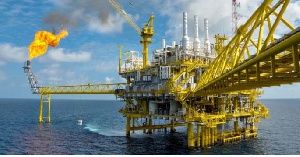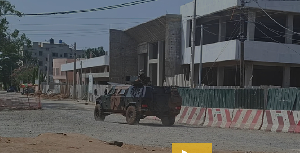Data made available to Goldstreet Business this week suggests that the slow down in Ghana’s economic growth rate in 2018 was caused, in part by a dramatic fall in foreign investment into the upstream oil and gas sector during the first nine months of the year.
This is making the planned fast tracking of the impending Pecan Oilfield, to be developed over the next two years by Aker Energy essential to Ghana’s growth plans for both this year and 2020.
During the first nine months of last year, foreign investment inflows into the upstream oil and gas sector, as registered by the Petroleum commission slumped sharply down to US$1.34 million, its lowest level since Ghana first discovered oil in commercial quantities in 2007.
Economists are now positing that this was a significant factor behind the slowdown in Ghana’s economic growth rate to 5.9 percent last year from a near half decade high of 8.1 percent in 2017, a year in which the Petroleum Commission recorded foreign investment inflows of US$493.86 million.
Instructively, non-oil growth for 2017 was 4.6 percent indicating that the oil sector accounted for 3.5 percent out of the overall 8.1 percent growth rate for the year.
Although a quantitative econometric correlation between investment into Ghana’s upstream oil and gas industry and the country’s economic growth rate has not been firmly established it is the conventional wisdom among economists that such a relationship does exist.
Indeed, heavy investment into the Jubilee oil field at the turn of the decade is unanimously believed to be responsible for Ghana’s world beating growth rate of 14.4 percent achieved in 2011.
In fact the political opposition, unsurprisingly argues that the dramatic improvement in Ghana’s economic growth in 2017, the first year in office of the incumbent President Nana Akufo Addo administration was largely the result of investment in the TEN cluster and Sankofa Gye Nyame oil and gas fields over the preceding couple of years although that assertion has not been confirmed by quantitative economic analyses.
It is still unclear why the level of registered investment into the country’s upstream oil and gas sector slumped so sharply in 2018, more so when the year came on the back of a landmark ruling by the International Tribunal on the Law of the Sea (ITLOS) on the maritime boundary dispute between Ghana and neighbouring Cote d’Ivoire which effectively opened the doors for new exploration and production activities to resume in Ghana’s territorial waters after a near 18 month suspension.
However, with economists positing that new investment is at least as important as actual production in Ghana’s oil and gas industry, the country is now looking up to the planned development of its fourth – and possibly largest – oilfield to boost growth back to its 2017 levels this year.
Government is targeting 7.6 percent growth for 2019 of which 6.2 percent is projected as non-oil growth and thus only 1.4 percent is expected to come from the oil sector. However, experience over the past decade indicates that if Ghana is to achieve its overall growth target for 2019 the upstream oil sector will have to make a much heavier contribution than that.
Business News of Saturday, 9 March 2019
Source: goldstreetbusiness.com













